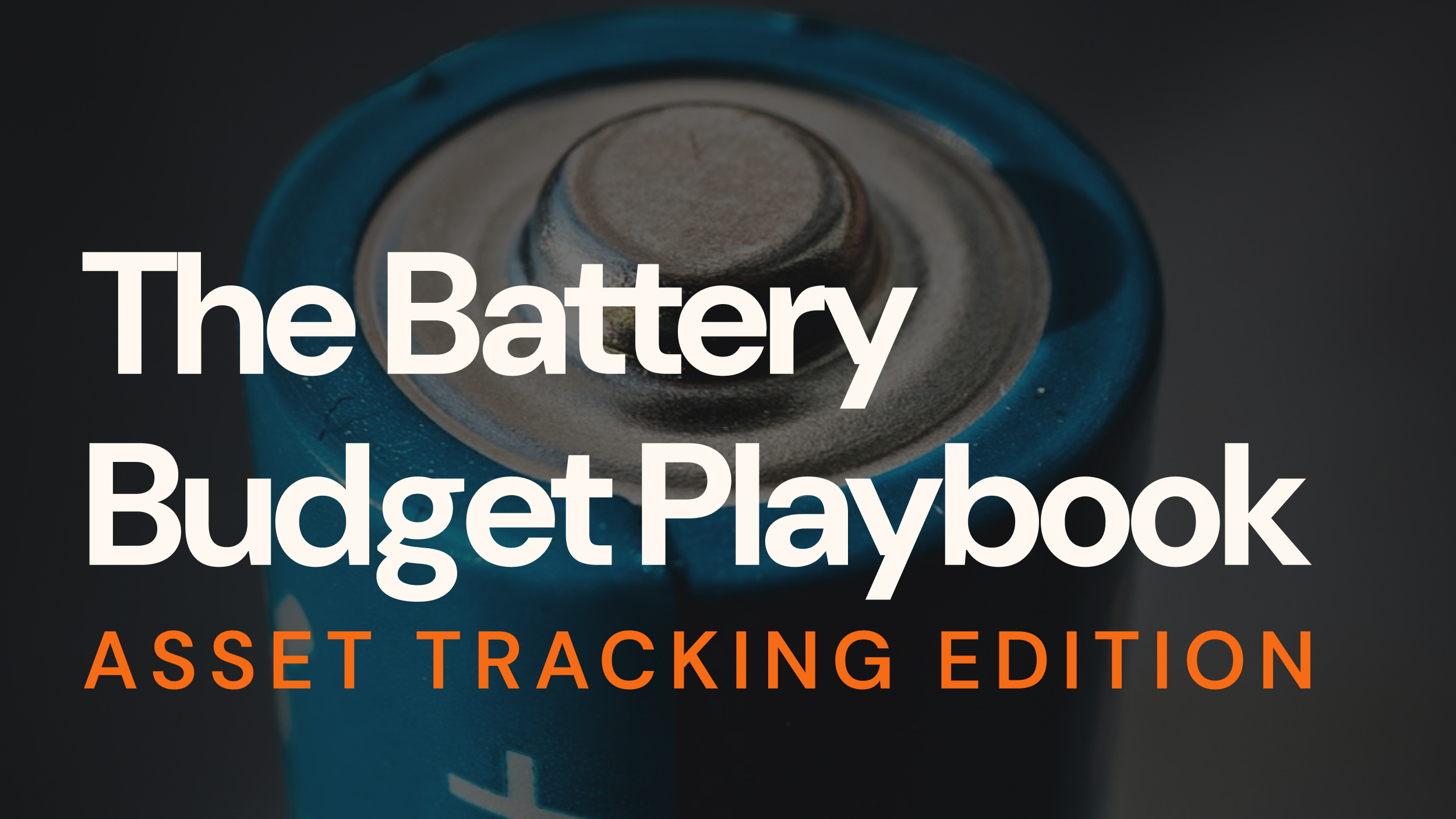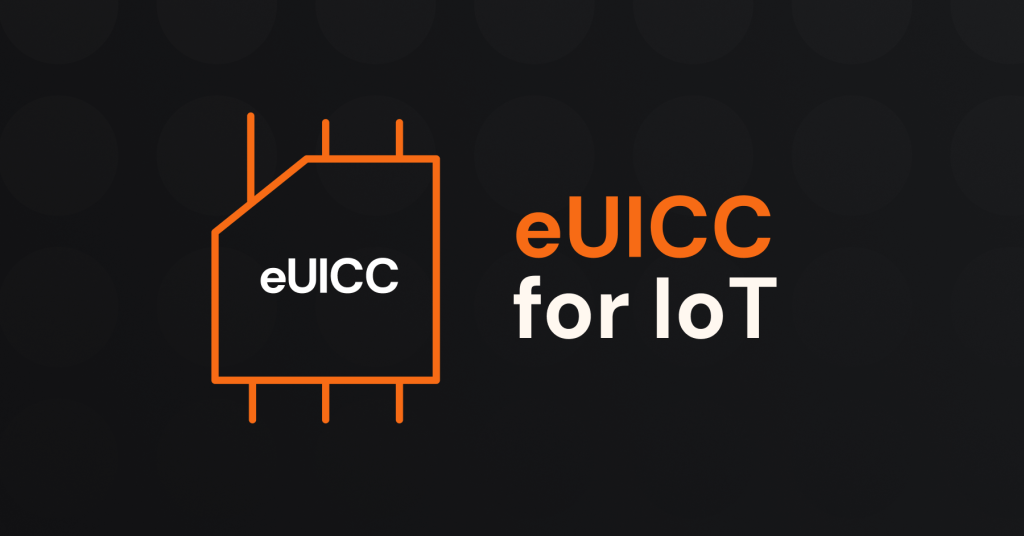Cellular connectivity improves visibility of supply-chain assets, valuable equipment, or precious cargo. Technologies for cellular connectivity in IoT based asset tracking devices transmit location and condition data to a cloud platform, enabling engineers, technicians, or managers to locate assets, take action, and refine fleet management decisions.
Connectivity, therefore, forms the crucial link between the device, the data it collects, and the decision-making process. Let’s delve deeper into how connectivity makes IoT asset tracking more efficient in this guide.
Table of Contents
IoT based asset tracking device components
Let’s consider asset tracking devices, which typically consist of three main components: one that captures data, another that transmits this captured data to the cloud for analysis, and a third that powers the entire process—namely, sensors, connectivity, and batteries.

Sensors
The range of sensors includes conventional types, such as those for pressure, temperature, and humidity, as well as innovative ones like VOC (Volatile Organic Compounds) sensors, which play a vital role in monitoring food spoilage and safety during transport.
Inertial sensors, including accelerometers and gyroscopes, form the foundation of asset tracking systems. Proximity sensors are increasingly used to enhance efficiency by providing precise data on asset orientation, proximity, and movement. They are particularly useful for maintaining tracking when GPS signals are unavailable.
Battery
In terms of power, efficiency is everything. Tracking operations that run without interruptions signify that battery life can be maximized and costly battery replacements can be postponed.
Connectivity
From a wireless perspective, cellular networks are indispensable for asset tracking, offering the extensive coverage needed for successful tracking operations. However, the choice of connectivity may vary according to specific use cases. Let’s examine some common scenarios and identify the most suitable options.
Connectivity options for IoT based asset tracking
There are many different types of connectivity solutions available. And it isn’t uncommon to find devices that use a combination of two or more different connectivity technologies to handle various communication requirements.
Bluetooth
Bluetooth is particularly useful for indoor tracking when the device remains within the range of the signal receiver. It offers scalable and cost-effective solutions for certain operations.
Ideal use of Bluetooth for IoT asset tracking includes:
- Tracking numerous assets within a confined infrastructure
- Working with a limited budget
- Devices that have a battery life of up to 10 years
- Combining with other connectivity options, such as cellular, for use cases that involve tracking in restricted spaces with international movement
Wi-Fi
For confined spaces such as warehouses, Wi-Fi provides a more cost-effective asset tracking solution. However, potential security vulnerabilities when using Wi-Fi should be carefully considered.
Ideal use of Wi-Fi for IoT asset tracking:
- Tracking assets that have either low or high data requirements in a limited area
- Utilizing existing infrastructure without incurring a separate data plan
- Having a reliable power source for the tracking device
Cellular
Cellular networks, which include 2G, 3G, 4G, LTE, and 5G, are a popular choice for devices that travel long distances, internationally, and are also suitable for enterprise-level IoT deployments. However, factors such as service availability, costs, power and data requirements, and regulations can influence the choice of cellular connectivity for a particular application.
Cellular connectivity made for IoT
Low-Power, Wide-Area Network (LPWAN) technology is ideal for IoT applications that require minimal power and data consumption, as these devices often need to cover great distances and remain in deployment for extended periods (typically 10-20 years).
Both LTE-M and NB-IoT are LPWAN technologies widely used in IoT applications. They are also well-suited for scenarios with low data and battery requirements, with the choice between the two often coming down to availability in the deployment location.
Apart from LPWAN, other network technologies such as LoRa, LTE (Cat 1bis), and even 2G may be suitable for your use case and the location of deployment. For example, 2G can be used as a fallback connectivity option. LTE Cat 1bis is also used to avoid having to rely on either LTE-M and NB-IoT, both of which are not always available in every location.
? Other types of connectivity for IoT:
- Sub-Gigahertz Networks: These networks are gaining popularity due to their extended range capabilities, making them ideal for closed systems such as campuses or agricultural environments.
- GPS: Although GPS provides accurate location data, it can encounter issues with signal blockage from large structures or indoor environments. GPS trackers on their own offer only location data.
- RFID tags: Radio Frequency Identification (RFID) tags transmit data to a reader using radio frequencies. Modern active RFID tags can even relay condition data, such as temperature, and are generally both accurate and cost-effective.
The impact of cellular connectivity to device efficiency
Asset tracking often requires an expansive connectivity footprint, from logistics companies managing truck fleets to tracking wildlife in remote areas. The ability to operate globally without connectivity limitations is crucial.
However, when optimizing device efficiency, the importance of connectivity can sometimes be underestimated. Connectivity can also enhance operations and maintenance beyond providing a seamless connection.
Connectivity challenges to overcome
Coverage gaps
Perhaps the biggest challenge to connectivity is reliability—to operate globally without the constraints of connectivity issues.
IoT based asset tracking is particularly prone to problems when devices move through different locations, encountering issues such as:
- Maintaining a continuous connection, particularly when crossing borders
- Deployments in inaccessible or location-constrained environments
- Conflicting regulatory requirements
Compliance with local and international regulations can complicate asset tracking. Technologies like eSIM, which embed the SIM onto the device during manufacturing, have helped eliminate the need for physical SIM card swaps to connect with local providers.
However, procuring connectivity service often comes with vendor lock-in agreements, which may restrict devices to only preferring certain providers regardless of signal quality, set in an FPLMN list (Forbidden Public Land Mobile Network). This is a practice known as SIM steering.
SIM steering impacts data quality through reduced packet loss from a weak network connection as well as power usage since devices use additional energy attempting to transmit, receive, and authenticate data. It introduces retransmissions caused by signal issues while also creating unnecessary power drain from a device continuously switching networks in an unstable manner. An effective SIM approaches both connectivity and efficiency to deliver a robust user experience at minimal operating cost.
Lower power consumption
The longevity of a tracking device is largely dependent on its battery life. To extend battery life, the device must use power efficiently, which could involve trade-offs in terms of range, frequency of updates, or the type of sensors used for data collection.
As devices travel across different regions or wake up from sleep mode to transmit data, they may repeatedly attempt to connect to various network providers. This search for preferred network providers rather than the strongest network signal leads to the device wasting data, time, and power.
Efficient data transmissions not only extends the battery life of IoT devices but also helps reduce data costs—key considerations for tracking devices especially those deployed in remote or hard-to-access areas.
? To address the power efficiency challenge, several techniques are used in the design of tracking devices:
- Energy-Saving Modes: Features such as Power Saving Mode (PSM) and Extended Discontinuous Reception (eDRX) enable devices to enter low-power or sleep modes when not actively transmitting data, waking only at predetermined intervals or in response to specific events, such as movement.
- Smart Geofencing: Devices can modify their behavior based on their location, for instance, by reducing update frequency when within a secure area and increasing it when in transit.
Debugging
Managing IoT asset tracking operations is the practice of overseeing the movement and status of devices from end-to-end. It is continuous and doesn’t typically pause for poor network coverage. But when issues arise, troubleshooting could take days to find the root of the issue in the absence of on-demand diagnostic tools to look into connectivity.
The insights needed to investigate issues, what kind of impact it might have in your operations, and determining the next steps are often lacking. Many providers don’t provide tools that offer insight into potential connection issues between a device, RAN, or cloud server.
If you have a globally-distributed deployment, it is impractical to physically inspect each device to diagnose problems. Engineers or managers may wait days for information from network providers to investigate issues, leading to delays in debugging and potentially costly operational and security risks.
Strategies for enhancing device efficiency with connectivity
No SIM steering
Non-steered SIMs simplify connectivity by avoiding vendor lock-in complexities. Our IoT SIMs are non-steered, granting better control over connectivity that suits your devices, whether prioritizing signal quality or cost of data.
We provide a pay-as-you-go model, charging only for the data the SIM uses. This contrasts with other operators who may impose bulk pricing, potentially leading to higher costs or substantial upfront expenses that exceed your business’s needs.
Furthermore, our Network Marketplace features over 590 networks from 180 countries, enabling you to choose the network that best meets your requirements.






